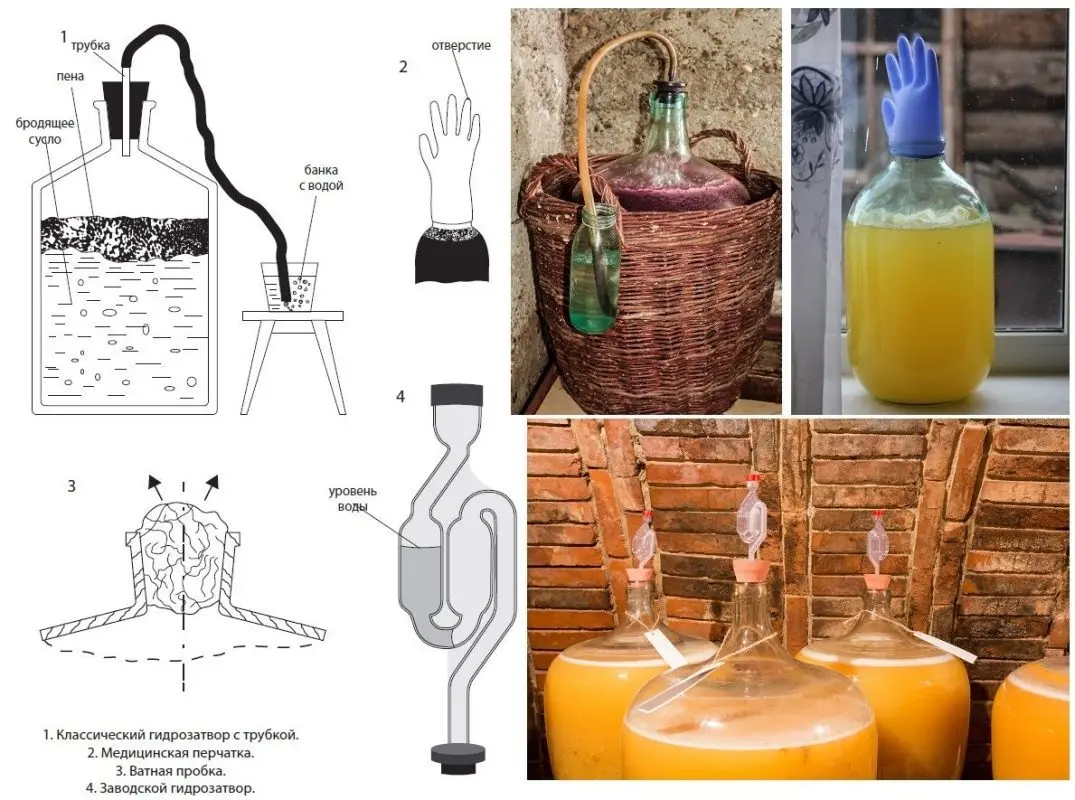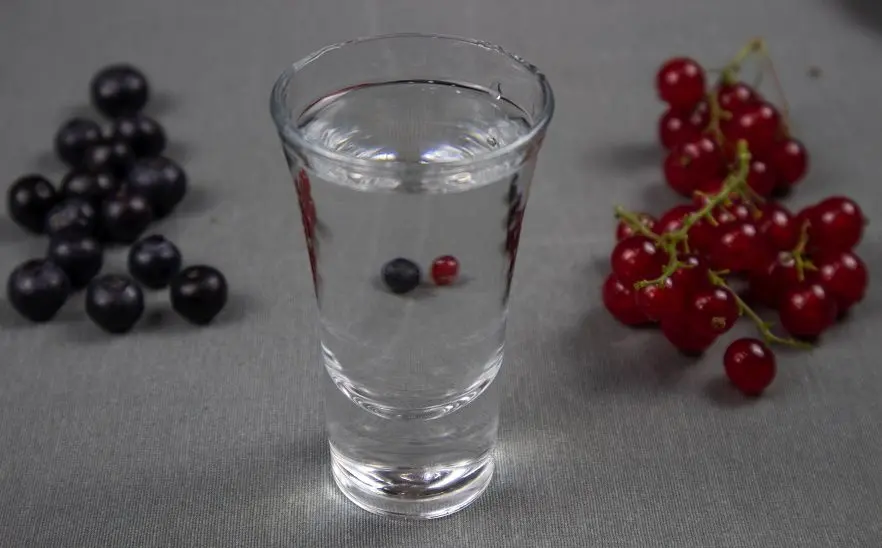The technology for making moonshine from currants is slightly different from the method for obtaining other fruit distillates. The fact is that the skin, pulp and seeds of berries contain a lot of pectin – a substance that turns into methanol during fermentation. Although the concentration of methanol is negligible, it is better not to risk your health.
This problem is solved quite simply – only juice will ferment. First, we will make young homemade wine using a simplified method, and then we will distill the drink into moonshine. Another important point is that currant berries (both red and black) are very sour, they ferment poorly, so sugar must be added, otherwise the distillate yield will be scanty.
Ingredients:
- currants – 5 kg;
- water – 10 liters;
- sugar – 3 kg;
- unwashed raisins – 30 grams.
Raisins are used for reinsurance as a source of wild yeast. To speed up fermentation by 3-5 times, instead of raisins, baker’s yeast (400 grams of pressed or 80 grams of dry) can be added to the mash. True, the fruity aroma will not be so rich.
Currant mash recipe
1. Crush the unwashed berries with a rolling pin, place the pulp together with the juice in a large pot or bucket. Add raisins, mix well.
2. Bandage the neck of the container with gauze, leave in a dark place for 1-2 days at a temperature of 18-25°C. Stir every 6-8 hours.
3. When fermentation starts (foam, hissing, sour smell appear), squeeze the juice through cheesecloth or thick cloth. If fermentation has not started, you will have to add yeast and wait another 1-2 days.
4. Pour the juice into a fermentation tank. Add sugar and warm water (20-30°C).
5. Mix the contents of the bottle well, install a water seal of any design.

6. Put the container in a dark place with a temperature of 18-29°C. Depending on the temperature and yeast, in 12-30 days the currant mash will be ready for distillation. The degree of readiness is determined by taste (the mash becomes bitter without sweetness) and the absence of signs of fermentation (carbon dioxide is not released, the foam disappears, sediment appears at the bottom).
7. Drain the mash from the sediment and filter through gauze. It is very important to remove the bones and the remains of the pulp, which can burn during distillation.
Obtaining moonshine from currants
8. Overtake the filtered mash. Select the product until the strength in the stream falls below 30%.
9. Measure the strength of the resulting moonshine. Determine the amount of pure alcohol (volume divided by 100 and multiplied by the fortress).
10. Dilute the distillate with water to 20%, then make a second distillation. Collect the first 10-12% of the yield from the amount of pure alcohol separately and pour it out or use it for technical purposes. This “head” is a harmful fraction that should not be drunk.
11. Select the main product before the strength in the jet drops below 40%.
12. Dilute double-distilled currant moonshine with water to 40-45% degrees. Leave in a tightly closed glass container for 2-3 days to stabilize the taste.










